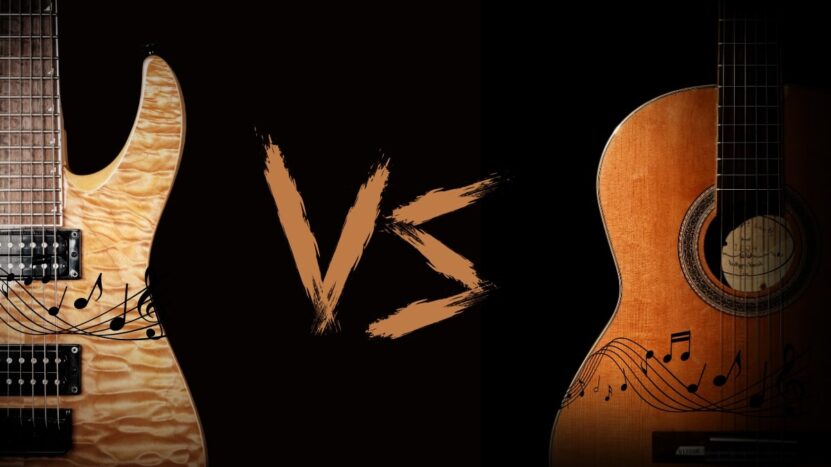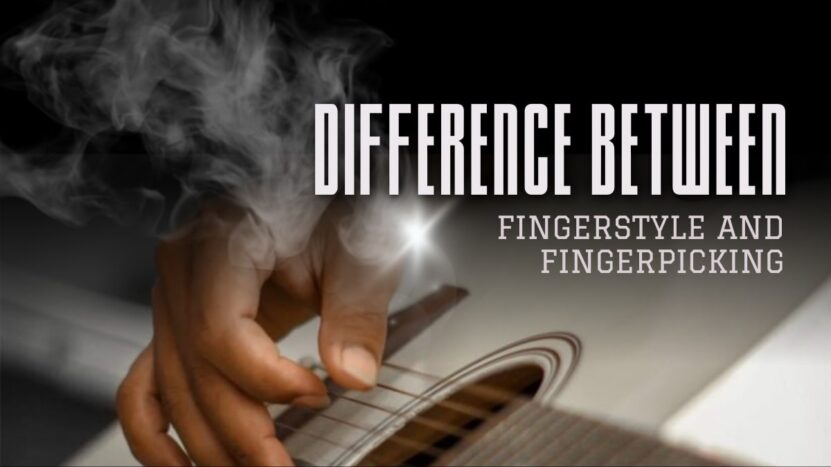The world of guitar playing is vast and diverse, with numerous techniques, styles, and genres that can be explored. Among these, fingerstyle and fingerpicking guitar techniques have become increasingly popular, capturing the attention of guitarists and music lovers alike. As they share many similarities, confusion often arises when attempting to differentiate between the two. In this comprehensive and engaging article, we’ll delve into the nuances of fingerstyle and fingerpicking, exploring their history, key characteristics, and notable players, all while demonstrating expertise on the subject matter and presenting the information in an easily digestible manner for a wide audience.
A Brief History of These Techniques
Fingerstyle and fingerpicking guitar techniques have deep historical roots, dating back hundreds of years. They can be traced to various guitar traditions across the world, from classical guitar to flamenco, folk, blues, and beyond.
Fingerstyle Technique
The fingerstyle technique can be traced back to the classical guitar tradition. In the 19th century, Spanish guitarist and composer Francisco Tárrega revolutionized guitar playing by developing a technique that involved using the fingertips to pluck the strings, as opposed to using a pick or plectrum. This technique gained widespread popularity and formed the foundation for modern fingerstyle playing.
Fingerpicking Technique
Fingerpicking, on the other hand, has its origins in American folk, blues, and country music. It emerged in the early 20th century and was popularized by musicians such as Mississippi John Hurt, Blind Blake, and Merle Travis. This technique is characterized by the use of the thumb to play bass notes and the fingers to play the melody or harmony.
Key Characteristics: What Sets These Techniques Apart?
While fingerstyle and fingerpicking share some similarities, they also have distinct characteristics that set them apart.
Fingerstyle
Fingerstyle is a more general term referring to any guitar-playing technique that involves using the fingers to pluck the strings directly. This can include various techniques such as arpeggios, chordal accompaniment, and single-note melodies. The primary focus in fingerstyle is often the integration of melody, harmony, and bass lines, which allows the guitarist to create a fuller, more orchestral sound.
Fingerpicking
Fingerpicking, also known as “thumb picking” or “Travis picking” (named after Merle Travis), is a specific style within the broader fingerstyle category. It involves the use of the thumb to play alternating or steady bass notes while the index, middle, and ring fingers pluck the higher strings to create melody and harmony. This technique is commonly used in folk, country, and blues music and is characterized by its distinct alternating bass pattern.
Acoustic vs. Electric: How Fingerstyle and Fingerpicking Techniques Translate to Different Guitars

Both fingerstyle and fingerpicking techniques can be employed on acoustic and electric guitars. However, they may produce different sounds and textures depending on the instrument used.
Acoustic Guitar
Acoustic guitars are well-suited for fingerstyle and fingerpicking techniques, as they naturally produce a warm and resonant tone. These techniques can be employed on a variety of acoustic guitars, including steel-string, nylon-string (classical), and even 12-string guitars.
Electric Guitar
While less common, fingerstyle and fingerpicking techniques can also be used on electric guitars. These techniques can create unique and interesting tones, particularly when combined with effects pedals and
amplification. Electric guitars offer a greater range of possibilities for fingerstyle and fingerpicking players, as they can experiment with various pickups, effects, and techniques to create a more dynamic sound.
Iconic Players and Influences: Fingerstyle and Fingerpicking Greats
Throughout history, many guitarists have made significant contributions to the development and popularization of fingerstyle and fingerpicking techniques. Their unique approaches have inspired countless musicians and shaped the way these techniques are used today.
Fingerstyle Icons
Andres Segovia
A Spanish classical guitarist, Segovia is considered one of the most important figures in the history of fingerstyle guitar. His virtuosic technique and emotive playing elevated the guitar as a serious concert instrument.
Chet Atkins
Known as “Mr. Guitar,” Chet Atkins was an American guitarist and record producer who had a significant impact on fingerstyle playing, particularly in country music. He developed his own unique style, blending fingerpicking with elements of jazz and pop.
Michael Hedges
Hedges was an American acoustic guitarist and composer who pioneered the “percussive fingerstyle” technique. He used unconventional tunings, harmonics, and percussive techniques to create innovative and intricate compositions.
Fingerpicking Icons
![]()
Mississippi John Hurt
An early pioneer of fingerpicking, Hurt was an American blues musician whose intricate and melodic playing style influenced generations of musicians.
Merle Travis
As the namesake of “Travis picking,” Merle Travis was an American country and western guitarist who popularized the fingerpicking technique that bears his name. His distinct alternating bass pattern became a hallmark of country and folk guitar playing.
Elizabeth Cotten
A self-taught guitarist, Cotten developed a unique fingerpicking style that became known as “Cotten picking.” Her innovative approach to the guitar and her contributions to American folk music has left a lasting legacy.
Learning and Mastering Fingerstyle and Fingerpicking Techniques
For those interested in exploring fingerstyle and fingerpicking techniques, there are numerous resources and methods available to help develop your skills.
Online Lessons and Tutorials
The internet is a treasure trove of information for aspiring guitarists. Websites such as YouTube offer countless video lessons and tutorials, providing step-by-step guidance on fingerstyle and fingerpicking techniques.
Books and Instructional Materials
There are many books and instructional materials available that focus on fingerstyle and fingerpicking techniques. These resources often provide exercises, songs, and practice routines to help build your skills.
Private Lessons and Workshops
One of the most effective ways to learn fingerstyle and fingerpicking techniques is through private lessons with a qualified instructor. Additionally, attending workshops and masterclasses led by accomplished guitarists can provide valuable insights and inspiration.
Final Words
Fingerstyle and fingerpicking techniques are an essential part of the guitar-playing landscape, offering guitarists the opportunity to create rich and expressive music. While they share similarities, it is important to recognize the distinctions between these techniques and their unique characteristics.
By exploring their history, key differences, and notable players, you can develop a deeper understanding of these techniques and their role in the world of guitar. Whether you are a beginner or an experienced guitarist, mastering fingerstyle and fingerpicking techniques can open up new musical horizons and enrich your playing experience.

